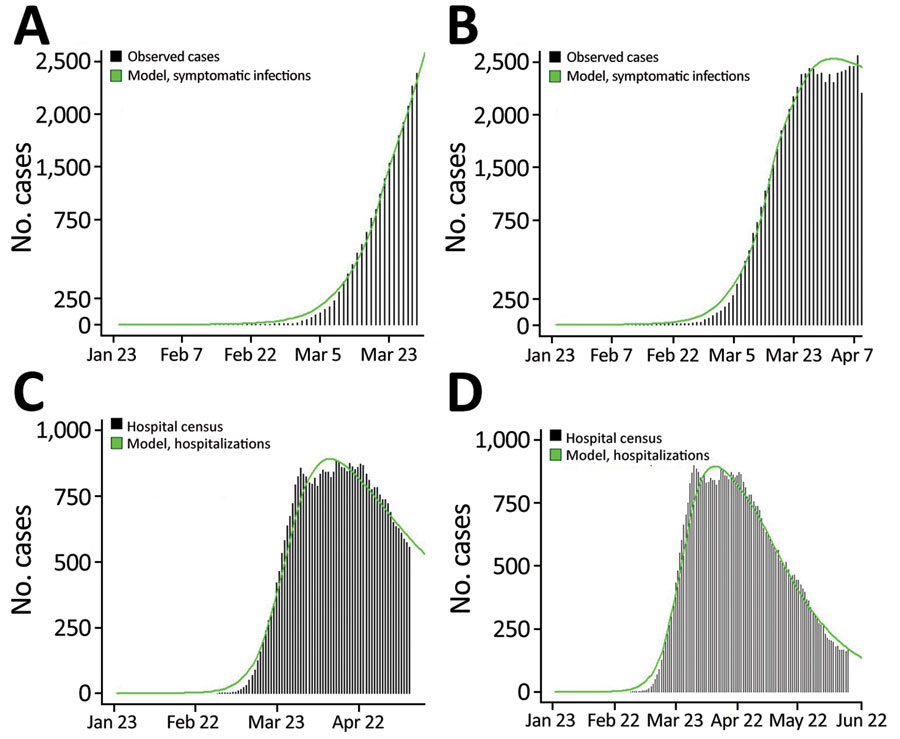Volume 27, Number 9—September 2021
Research
Estimating the Impact of Statewide Policies to Reduce Spread of Severe Acute Respiratory Syndrome Coronavirus 2 in Real Time, Colorado, USA
Figure 2

Figure 2. Observed (black bars) versus model-estimated (green line) number of reported coronavirus disease cases (panels A, B) and hospitalizations (panels C, D), Colorado, USA, 2020, based on models calibrated at 4 points in the early months of the epidemic. Model-based estimates were generated by using an age-structured susceptible-exposed-infected-recovered model, and best-fit parameter values were estimated based on observed data shown. Reported cases are shown by using symptom onset date or report date minus 7 days if onset date was missing, in accordance with onset to report lags for Colorado during this period.
1Current affiliation: University of Maryland School of Medicine, Baltimore, Maryland, USA.
Page created: June 02, 2021
Page updated: August 17, 2021
Page reviewed: August 17, 2021
The conclusions, findings, and opinions expressed by authors contributing to this journal do not necessarily reflect the official position of the U.S. Department of Health and Human Services, the Public Health Service, the Centers for Disease Control and Prevention, or the authors' affiliated institutions. Use of trade names is for identification only and does not imply endorsement by any of the groups named above.